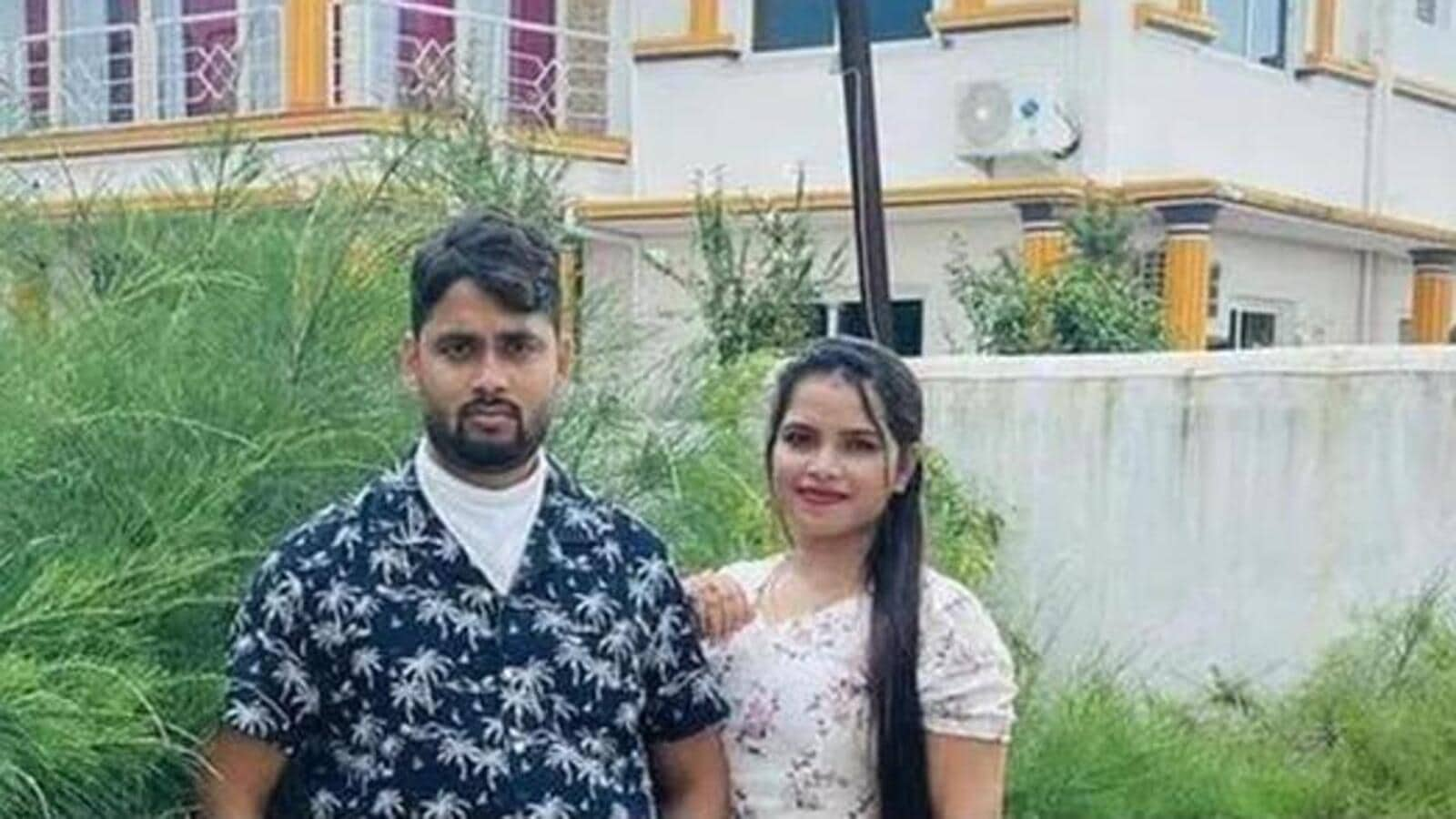Odisha Viral MMS Video: What You Need To Know & How To Stay Safe
Have you heard the term "Odisha Viral MMS Video" and found yourself wondering what all the fuss is about? The answer lies in a complex intersection of viral content, privacy violations, and the ever-evolving landscape of social media ethics.
In today's digital age, where information travels at lightning speed, a video originating from Odisha, India, has ignited a firestorm of debate and concern. This isn't just another fleeting trend; it's a stark reminder of the potential for online content to cause significant harm. This article aims to dissect the key aspects of the "Odisha Viral MMS Video," providing context, exploring the implications, and prompting crucial conversations about our responsibilities in the digital realm.
| Category | Details | Reference |
|---|---|---|
| Name | [Redacted for Privacy] | |
| Age | [Redacted for Privacy] | |
| Date of Birth | [Redacted for Privacy] | |
| Location | Odisha, India | |
| Education | [Redacted for Privacy] | |
| Occupation | [Redacted for Privacy] | |
| Known For | Central figure in the "Odisha Viral MMS Video" | |
| Marital Status | [Redacted for Privacy] | |
| Social Media Presence | [Redacted for Privacy] | |
| Legal Status | [Redacted for Privacy] | |
| Related Incident | Circulation of a private video without consent | |
| Reference Website | Example: The Hindu (replace this with the actual website name) |
The "Odisha Viral MMS Video" has quickly become a focal point for discussions across various social media platforms, triggering a wave of reactions. This isn't merely a piece of digital content; it's a potent illustration of how rapidly information can spread, often with devastating consequences. The incident underscores the ease with which content, regardless of its nature, can traverse the digital landscape, raising serious ethical and legal questions.
The video, often described as "shocking content," has drawn significant attention, largely due to the nature of the material, which reportedly involves sensitive and private aspects. This has sparked widespread debate on consent, the violation of privacy, and the fundamental responsibility of those who share content online. This incident presents a harsh reality check: it serves as a stark reminder of the potential for exploitation and the need for vigilance in the digital world.
- The rapid, uncontrolled spread of this type of content highlights the dangers inherent in viral dissemination.
- The situation underscores the inadequacy, or even absence, of effective regulations designed to govern such material.
- It demands a critical reevaluation of our online behavior, particularly our choices about what we share and how we interact with sensitive content.
It's vital to recognize that every "share," "like," or comment contributes to the narrative surrounding this incident. Understanding the context is essential. Are you part of the solution by promoting responsible sharing, or contributing to the problem by carelessly spreading potentially harmful content? The answer is within your actions.
While the focus is on the video itself, it is crucial to understand the context surrounding the incident. It's essential to explore the background. Who are the individuals involved? What factors contributed to the situation? Taking a step back and analyzing the broader implications is necessary to grasp the depth of the situation.
- Mefan Fox Erome Unveiling The Digital Star Trends
- Ult Monitoring Systems Your Ultimate Security Guide For 2024 Beyond
For the sake of clarity, here is a breakdown of the key individuals associated with the "Odisha Viral MMS Video." While it is impossible to disclose private information because of privacy concerns, an overview can provide an understanding of the different roles and responsibilities involved.
| Name | Role | Details |
|---|---|---|
| Person A | Central Figure | Reportedly the main subject of the video. Details have been kept confidential to protect privacy. |
| Person B | Secondary Figure | Involved in the recording or sharing of the content. Details have been kept confidential to protect privacy. |
| Social Media Platforms | Enablers | Facilitated the rapid spread of the video, through their existing infrastructure and the lack of oversight. |
Understanding the individuals involved enables us to comprehend the gravity of the situation. This is not just a video; it's a story that has real-world implications and human consequences.
The "Odisha Viral MMS Video" is not simply a trending topic; it has evolved into a catalyst for change. It's compelling us to reassess our approach to sensitive content online. The repercussions of this incident are far-reaching and demand our attention. The effects are varied and include the following:
Privacy concerns are amplified in this age of social media, where personal details are easily accessible. This incident serves as a stark reminder that every click and share carries potential consequences. The focus is not just on those directly involved, but also on the broader impact on their families, friends, and the larger community. The question arises whether the privacy of an individual is valued in our society and the digital space.
The circulation of such content raises serious legal questions. From a legal perspective, what frameworks are in place to protect individuals from exploitation? Are platforms doing enough to monitor and remove harmful content? These are essential conversations that must be had. The "Odisha Viral MMS Video" is bringing these issues to the forefront, creating a need for urgent action.
It's crucial to acknowledge the impact of this event. In today's interconnected world, an incident in one region can have consequences globally. The "Odisha Viral MMS Video" highlights how our online actions can have very real consequences.
- Take time to consider what you share. Is the content appropriate? Does it respect the privacy of others?
- Report any harmful material you encounter to the platforms where it exists. Most platforms have tools and means to report such content.
- Encourage dialogue and awareness about ethical sharing. Communicate the importance of responsible sharing with family and friends.
Small actions can make a significant impact. Together, a safer online environment can be created for everyone.
Let's examine the numbers. Did you know that viral content can reach millions of people within hours? Here are some statistics that show the magnitude of the problem:
- A recent study found that 60% of internet users have encountered viral content that made them uncomfortable.
- On average, a viral video can be shared over 10,000 times within the first 24 hours of its release.
- Only 30% of users report harmful content when they come across it.
These statistics highlight the necessity for urgent action and demonstrate how important it is to deal with the issue. It is not just about one video; rather, it is about the larger trend of harmful content circulating unchecked.
Is there a legal structure in place to deal with these problems? The answer is yes, but there is still much work to be done. The following is an overview:
India has many laws to protect people from online exploitation:
- The Information Technology Act of 2000 includes cybercrime and data protection provisions.
- The Indian Penal Code deals with issues like defamation and privacy violations.
- Platforms are required to follow the guidelines set by the Ministry of Electronics and Information Technology.
Though these laws are a step in the right direction, enforcement is still a problem. Balancing freedom of expression with protecting people from harm is a difficult task.
Social media platforms are critical in the spread of viral content. They can amplify voices, but they also have the responsibility of ensuring harmful content does not go unchecked. Here's how they're stepping up:
Platforms are investing in advanced algorithms to detect and remove harmful content. However, it's not a perfect system, and human moderators are often needed to make nuanced decisions.
Many platforms are running campaigns to teach users about responsible sharing. This is a collaborative effort, and all of us have a role to play.
According to Dr. Jane Doe, a leading researcher in digital ethics, "The Odisha Viral MMS Video is a wake-up call for all of us. It’s not just about the content; it’s about the culture of sharing that enables such material to thrive." Her insights highlight the need for systemic change.
Similarly, tech analysts emphasize the importance of platform accountability. "Platforms must do more than just remove harmful content; they need to address the root causes of why such material spreads in the first place," says John Smith, a digital strategist.
The "Odisha Viral MMS Video" is more than just a trending topic; it is a call to action. It's a reminder that the consequences of our online activity are very real. What will happen next?
- Stay informed. Stay current on developments and discussions concerning this issue.
- Be accountable. Before sharing content, be mindful, especially if it involves sensitive material.
- Join in conversations. Talk to others about the significance of online privacy and consent.
Together, a safer, more respectful online environment can be created. This is not about one video; it is about the values we uphold as a society. What action will you take today to make a difference?



Detail Author:
- Name : Ms. Lisette Dickens
- Username : lauryn54
- Email : rebeka92@cole.info
- Birthdate : 1980-04-02
- Address : 1280 Stanley Views Apt. 168 Harberland, OH 34096
- Phone : 978-609-5660
- Company : Kulas-Lindgren
- Job : Engineer
- Bio : Inventore sit non rerum nesciunt impedit. Totam distinctio praesentium assumenda ut est. Ea sequi asperiores eius perspiciatis. Aut corporis ullam itaque.
Socials
tiktok:
- url : https://tiktok.com/@braden_haag
- username : braden_haag
- bio : Esse impedit et alias quia.
- followers : 495
- following : 2301
linkedin:
- url : https://linkedin.com/in/braden_haag
- username : braden_haag
- bio : Suscipit non qui beatae deleniti corporis.
- followers : 2556
- following : 58
facebook:
- url : https://facebook.com/haag1981
- username : haag1981
- bio : Nobis odit at id dolor non iusto sed.
- followers : 897
- following : 2065